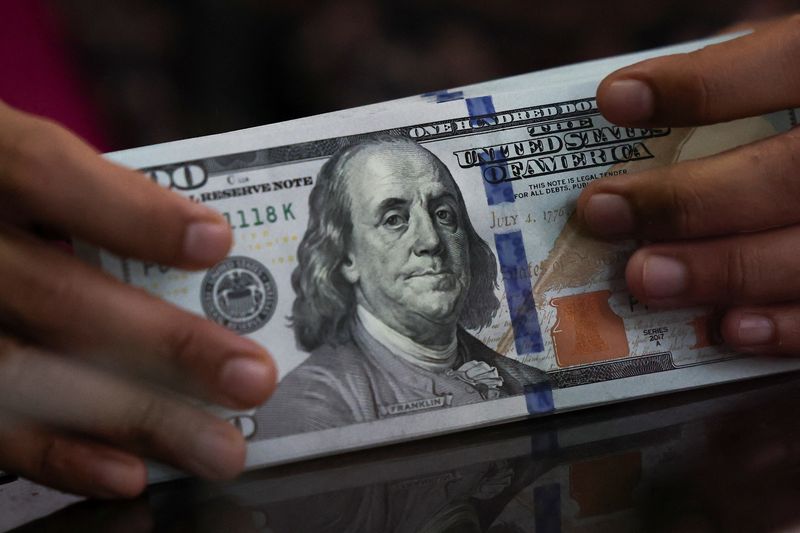Picozzi, S. Engineering ferromagnetism. Nat. Mater. 3, 349–350 (2004).
Google Scholar
Ohno, H. A window on the future of spintronics. Nat. Mater. 9, 952–954 (2010).
Google Scholar
Ohno, H. Making nonmagnetic semiconductors ferromagnetic. Science 281, 951–956 (1998).
Google Scholar
Ohno, Y. et al. Electrical spin injection in a ferromagnetic semiconductor heterostructure. Nature 402, 790–792 (1999).
Google Scholar
Csontos, M. et al. Pressure-induced ferromagnetism in (In,Mn)Sb dilute magnetic semiconductor. Nat. Mater. 4, 447–449 (2005).
Google Scholar
Dietl, T. A ten-year perspective on dilute magnetic semiconductors and oxides. Nat. Mater. 9, 965–974 (2010).
Google Scholar
Deng, H. et al. High-temperature quantum anomalous Hall regime in a MnBi2Te4/Bi2Te3 superlattice. Nat. Phys. 17, 36–42 (2021).
Google Scholar
Yi, D. et al. Emergent electric field control of phase transformation in oxide superlattices. Nat. Commun. 11, 902 (2020).
Google Scholar
Liu, S. et al. Two-dimensional ferromagnetic superlattices. Natl Sci. Rev. 7, 745–754 (2020).
Google Scholar
Ren, H., Wan, Z. & Duan, X. Van der Waals superlattices. Natl Sci. Rev. 9, nwab166 (2021).
Google Scholar
Wan, Z., Qian, Q., Huang, Y. & Duan, X. Layered hybrid superlattices as designable quantum solids. Nature 635, 49–60 (2024).
Google Scholar
Li, Z. et al. Molecule-confined engineering toward superconductivity and ferromagnetism in two-dimensional superlattice. J. Am. Chem. Soc. 139, 16398–16404 (2017).
Google Scholar
Husremović, S. et al. Hard ferromagnetism down to the thinnest limit of iron-intercalated tantalum disulfide. J. Am. Chem. Soc. 144, 12167–12176 (2022).
Google Scholar
Wang, C. et al. Monolayer atomic crystal molecular superlattices. Nature 555, 231–236 (2018).
Google Scholar
Whittingham, M. S. & Gamble, F. R. The lithium intercalates of the transition metal dichalcogenides. Mater. Res. Bull. 10, 363–371 (1975).
Google Scholar
Zheng, J. et al. High yield exfoliation of two-dimensional chalcogenides using sodium naphthalenide. Nat. Commun. 5, 2995 (2014).
Google Scholar
Qian, Q. et al. Chiral molecular intercalation superlattices. Nature 606, 902–908 (2022).
Google Scholar
Li, Z. et al. Imprinting ferromagnetism and superconductivity in single atomic layers of molecular superlattices. Adv. Mater. 32, 1907645 (2020).
Google Scholar
Koski, K. J. et al. Chemical intercalation of zerovalent metals into 2D layered Bi2Se3 nanoribbons. J. Am. Chem. Soc. 134, 13773–13779 (2012).
Google Scholar
Gong, Y. et al. Spatially controlled doping of two-dimensional SnS2 through intercalation for electronics. Nat. Nanotechnol. 13, 294–299 (2018).
Google Scholar
Ren, H. et al. Precision control of amphoteric doping in CuxBi2Se3 nanoplates. Precis. Chem. 2, 421–427 (2024).
Google Scholar
Zeng, Z. et al. An effective method for the fabrication of few-layer-thick inorganic nanosheets. Angew. Chem. Int. Ed. 51, 9052–9056 (2012).
Google Scholar
Lin, Z. et al. Solution-processable 2D semiconductors for high-performance large-area electronics. Nature 562, 254–258 (2018).
Google Scholar
He, Q. et al. In situ probing molecular intercalation in two-dimensional layered semiconductors. Nano Lett. 19, 6819–6826 (2019).
Google Scholar
Wang, G. et al. Revisiting the structural evolution of MoS2 during alkali metal (Li, Na, and K) intercalation. ACS Appl. Energy Mater. 4, 14180–14190 (2021).
Google Scholar
Acerce, M., Voiry, D. & Chhowalla, M. Metallic 1T phase MoS2 nanosheets as supercapacitor electrode materials. Nat. Nanotechnol. 10, 313–318 (2015).
Google Scholar
Guo, Y. et al. Probing the dynamics of the metallic-to-semiconducting structural phase transformation in MoS2 crystals. Nano Lett. 15, 5081–5088 (2015).
Google Scholar
Molina-Sánchez, A. & Wirtz, L. Phonons in single-layer and few-layer MoS2 and WS2. Phys. Rev. B 84, 155413 (2011).
Google Scholar
Zou, J., Li, F., Bissett, M. A., Kim, F. & Hardwick, L. J. Intercalation behaviour of Li and Na into 3-layer and multilayer MoS2 flakes. Electrochim. Acta 331, 135284 (2020).
Google Scholar
Li, H. et al. From bulk to monolayer MoS2: evolution of Raman scattering. Adv. Funct. Mater. 22, 1385–1390 (2012).
Google Scholar
Zhu, L. et al. Investigation of CoS2-based thin films as model catalysts for the oxygen reduction reaction. J. Catal. 258, 235–242 (2008).
Google Scholar
Kappera, R. et al. Phase-engineered low-resistance contacts for ultrathin MoS2 transistors. Nat. Mater. 13, 1128–1134 (2014).
Google Scholar
Flory, M. A., McLamarrah, S. K. & Ziurys, L. M. High-resolution spectroscopy of CoS (X4Δi): examining 3d transition-metal sulfide bonds. J. Chem. Phys. 123, 164312 (2005).
Google Scholar
Yu, Z. X. et al. The structure of the CoS2 (100)-(1×1) surface. J. Condens. Matter Phys. 19, 156223 (2007).
Google Scholar
Luo, Y. et al. Two-dimensional MoS2 confined Co(OH)2 electrocatalysts for hydrogen evolution in alkaline electrolytes. ACS Nano 12, 4565–4573 (2018).
Google Scholar
Schlapp, R. & Penney, W. G. Influence of crystalline fields on the susceptibilities of salts of paramagnetic ions. II. The iron group, especially Ni, Cr and Co. Phys. Rev. 42, 666–686 (1932).
Google Scholar
Greaney, M., Huan, G., Ramanujachary, K. V., Teweldemedhin, Z. & Greenblatt, M. Antiferro-to-ferromagnetic transition in metallic TlCo2SxSe2−x (0 ≤ x ≤ 2.0) with the ThCr2Si2 type structure. Solid State Commun. 79, 803–810 (1991).
Google Scholar
Griffith, J. S. & Orgel, L. E. Ligand-field theory. Q. Rev. Chem. Soc. 11, 381–393 (1957).
Google Scholar
Deng, W. et al. Constructing matched sub-nanometric cobalt clusters with multiple oxidation and metallic states for efficient propane dehydrogenation. Commun. Mater. 5, 215 (2024).
Google Scholar
Ko, K. T. et al. RKKY ferromagnetism with Ising-like spin states in intercalated Fe1/4TaS2. Phys. Rev. Lett. 107, 247201 (2011).
Google Scholar
Ruderman, M. A. & Kittel, C. Indirect exchange coupling of nuclear magnetic moments by conduction electrons. Phys. Rev. 96, 99–102 (1954).
Google Scholar
Yosida, K. Magnetic properties of Cu–Mn alloys. Phys. Rev. 106, 893–898 (1957).
Google Scholar
Priour, D. J. & Das Sarma, S. Phase diagram of the disordered RKKY model in dilute magnetic semiconductors. Phys. Rev. Lett. 97, 127201 (2006).
Google Scholar
Lei, S. et al. High mobility in a van der Waals layered antiferromagnetic metal. Sci. Adv. 6, eaay6407 (2020).
Google Scholar
Mugiraneza, S. & Hallas, A. M. Tutorial: a beginner’s guide to interpreting magnetic susceptibility data with the Curie-Weiss law. Commun. Phys. 5, 95 (2022).
Google Scholar
Xie, L. S., Husremović, S., Gonzalez, O., Craig, I. M. & Bediako, D. K. Structure and magnetism of iron- and chromium-intercalated niobium and tantalum disulfides. J. Am. Chem. Soc. 144, 9525–9542 (2022).
Google Scholar
Pfleiderer, C. et al. Coexistence of superconductivity and ferromagnetism in the d-band metal ZrZn2. Nature 412, 58–61 (2001).
Google Scholar
Shermadini, Z. et al. Coexistence of magnetism and superconductivity in the iron-based compound Cs0.8(FeSe0.98)2. Phys. Rev. Lett. 106, 117602 (2011).
Google Scholar
Rahmanian, E. et al. 1T-phase tungsten chalcogenides (WS2, WSe2, WTe2) decorated with TiO2 nanoplatelets with enhanced electron transfer activity for biosensing applications. ACS Appl. Nano Mater. 1, 7006–7015 (2018).
Google Scholar
Zhou, J., Zhou. J. & Duan, X. Replication data for: A cation-exchange approach to tunable magnetic intercalation superlattices. figshare https://doi.org/10.6084/m9.figshare.28908146 (2025).





